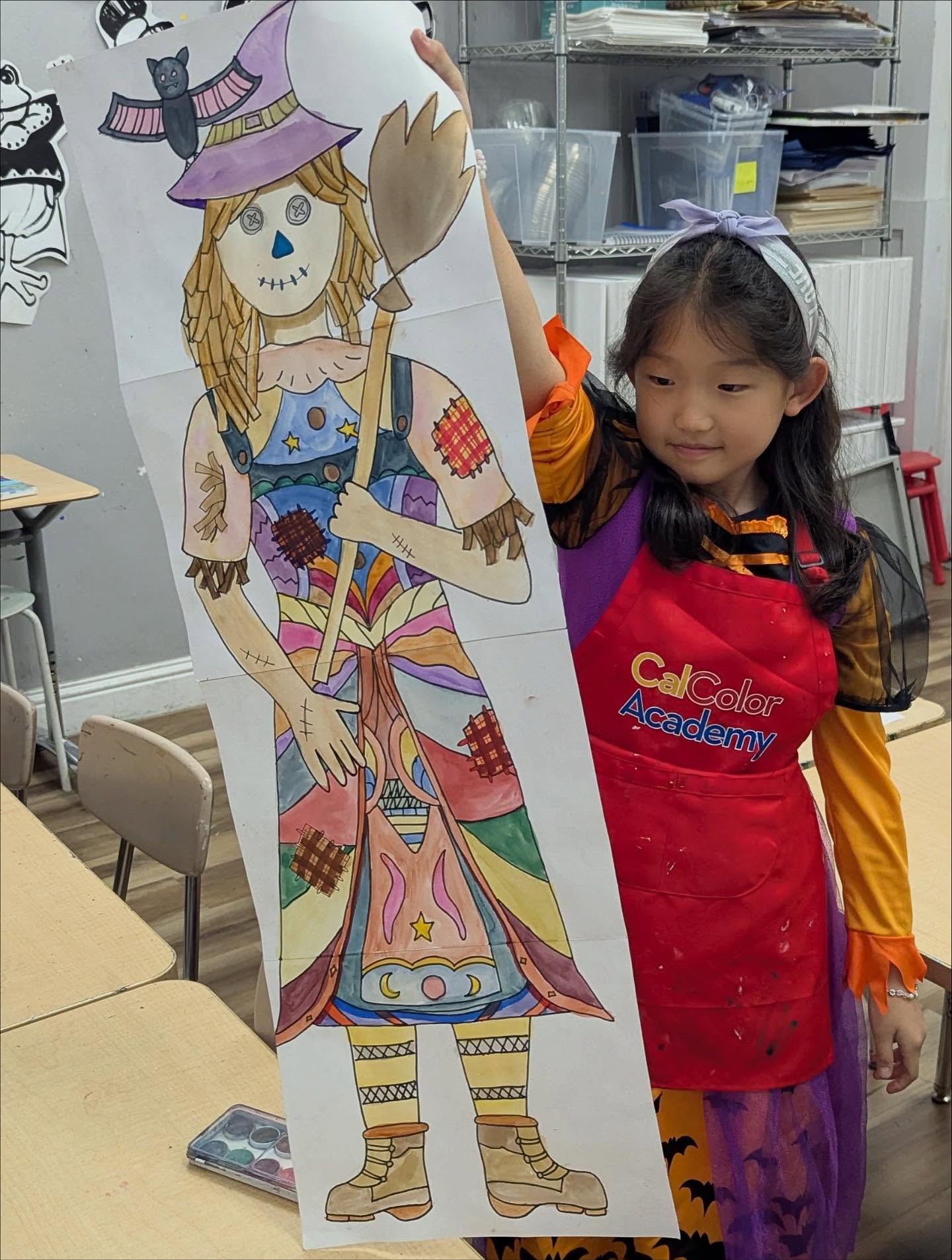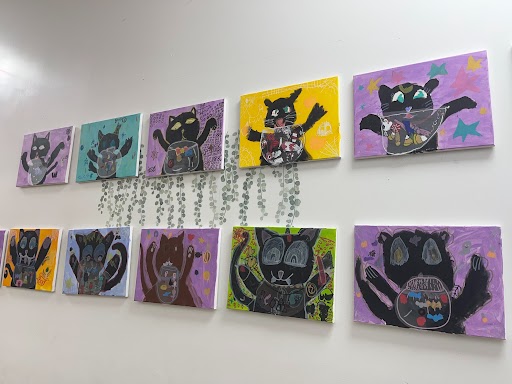How Art Classes for Kids Encourage Emotional and Cognitive Growth?

Have you ever handed a child a box of crayons and simply stood back and seen what transpires? In mere seconds, they're off, coloring outside of the lines, combining purple and orange, drawing a seven-armed monster because, heck, why not? That is the nature of children and art: they don't overthink it. They simply make it.
But here's the thing: that simple doodling or painting isn't playtime alone. It's actually reshaping their brain. An art class for kids does more than instruct them in how to draw; it builds them up emotionally, mentally, and even socially.
Let's get into how.
1. Art Provides Children with a Voice Before They Even Have Words for It
Kids have a wide range of feelings, hoping to be channeled one way or the other, even if they are not certain of the words. They might be enraged sometimes, and at other times they might be happy, or even both at once. The beauty and privilege of art is such that one does not even have to possess the right words in order to communicate.
A kid will depict a big black stormy cloud on a certain day and a bright colored rainbow the next day. That is an emotion represented on paper. That is the child showing, "this is how I feel", without even uttering a word.
For the teachers and parents, this is a great opportunity. You can actually see what is going on in the children's minds. And the kids? It is a release for them. They can vent: fear, thrill, sorrow, and eventually, they will be able to cope with them. That is the potential of emotional intelligence in practice, even though the kids might not be consciously aware of it.
2. It Builds Focus (Without Them Realizing)
Most children can't sit for five minutes. But set them down with a paintbrush and lo and behold, they're focused for an hour, trying to capture that perfect blue color.
Art happens to be a natural teacher of patience. Kids wait for the paint to dry. They correct a line that ran skew and redo it when something goes awry. That's concentration and perseverance, without anyone forcing them to "pay attention.
Down the road, that same concentration serves them in school, in sports, even in relationships. It's subtle conditioning for the mind.
3. Art Teaches Problem Solving In Disguise
No two children paint the same painting. And that's sort of the idea.
Should the sky be green? Can a cat have on sneakers? Why not?
Art encourages children to try and challenge the "rules." Each choice, each color, each form, is a small problem to solve. And they solve it with imagination, not stress.
Creative thinking, when you can change your approach according to the situation, that’s problem-solving. If you are present in a classroom where kids are working together on a single project, you can witness it live.
By visiting art classes in Mountain View, you will be able to see at once that all the paintings are different. The teachers are not telling the kids what is "correct"; rather, they are offering them the opportunity to learn what is possible. And this is where true development takes place.
4. It Sharpens Fine Motor Skills
Each time a child grips a pencil, paints a curve, or snips paper, they're developing coordination. It may not appear to be much, but those little motions exercise their hands and eyes to cooperate.
That's how they improve handwriting, shoelace-tying, and even typing down the road. It's physical development packaged in creative play. And the wonderful thing is, they don't even realize they're practicing. It's merely "art time" for them.
5. Art Boosts Confidence, Big Time
There's just something about completing a piece of drawing and having the ability to say, "I did this." That feeling of pride lingers.
In an art class for kids, there is no such thing as a "wrong answer." All ideas are given a voice. That sort of freedom creates confidence in the same way nothing else can. Children learn it is OK to make mistakes, try again, and continue.
As they notice improvements, even slight ones, they begin believing in themselves. That confidence does not remain on the canvas. It appears in the way they speak, the way they engage challenges, and the way they receive criticism.
6. It Builds Connection: Art Brings People Together
Art is not always a one-man show. Occasionally, children share paint, exchange ideas, or create group projects. That's a team effort in disguise.
They learn to listen, to encourage, and to provide feedback. And they do it in a relaxed, low-key fashion. The quiet child opens up. The boisterous child learns to slow down and work together. Everybody finds their rhythm.
That feeling of belonging to something matters a great deal, particularly today when children spend so many hours on screens.
Finding the Right Kind of Art Class: CalColor
All art programs are not created equal. The finest of them don't just occupy children; they instruct them in how to think and feel using art. They combine technique with liberty, structure with discovery.
That's how CalColor Academy is different. We don't merely teach art; we instruct children on how to find their own artistic voice. We realize that each child learns in a different manner. Some require a little push, others only need room. CalColor finds harmony between both.
Our curriculum develops with the child. Starting with the first drafts and finishing with the formal portfolio works for youngsters. But all the way through the process, the main focus is helping kids to grow up as more confident, curious, and emotionally intelligent people.
In case you are a resident of the Bay Area, you should surely pay us a visit. The trial classes are available as well, which is wonderful because sometimes just one lesson is enough for a kid to become really interested.
Final Thoughts
Here's the thing: art isn't all about creating pretties. It's about making kids more patient, more expressive, more themselves.
So yeah, enrolling in art class for kids isn't just another after-school activity. It's an investment in the way your kid learns to experience the world and their place in the world.
And if you just so happen to be in the Bay Area, go check out art classes in Mountain View. You could go in thinking crayons and paper, and come out knowing it's so much more than that.
Because art isn't just contained to the canvas, but seeps into every aspect of things, how children think, how they feel, and how they turn out to meet the world.
FAQs
Q1. How do art classes help with my child’s emotional growth?
They give kids a safe space to express feelings when words don’t cut it — it’s therapy with paint and crayons.
Q2. Will art help my child to get smarter?
Yep. Art creates concentration, problem-solving, and the ability to think creatively -all the things that make the young minds sharp.
Q3. At what age should you initiate an art lesson in children?
To be quite frank, they can hold a crayon as soon as possible. The majority of classes begin at the age of approximately 4 years and expand along with the child.


Discover the Best Art Classes in Fremont for Kids

5 Reasons to Enroll Your Child in a Children’s Art Class Today

10 Reasons Why an Art Class for Kids Boosts Creativity and Confidence

How a Children’s Art Class Can Inspire Lifelong Passion?

Unlock Your Child’s Creativity with Art Classes in Belmont

How Does a Children’s Art Class Help with Emotional Development?

How Does an Art Class for Kids Boost Creativity and Confidence?

What Should You Look for When Choosing Art Classes in Mountain View?

What Makes Fremont Art Classes So Popular in 2025?

2025 IAMA Youth Art Contest and Exhibition
Unlock Your Child’s Artistic Potential: Finding the Right Art Class for Kids

Artistic Eyes: Exploring the Secrets of Composition

8/10 CalColor Open House tryout Classes Invitation

Teen Boot Camp: The Winning Strategy for College Applications

An Artistic Summer to Renew Kids’ Life: 4 Key Logics Reveal the Value of Art Camps

Brush of the Future: How Digital Art Empowers Children's Path to College and Career

Summer Camp Carnival: A Must-Attend Artistic Feast for All Ages

The Dream of Art, The Journey of a Year: CalColor 2023 Year-End Summary

How to Visit an Art Museum – A Guide for Families

Rising from Scratch: The Remarkable Journey of CalColor Teen Program

Changing Perspectives: How Art Transforms Students' Views of the Everyday
CalColor Academy's younger students recently explored car interiors. Students typically draw the outside of cars, but we asked them to focus on the details of dashboards, steering wheels, and AC vents. Different age groups used various techniques: younger students focused on basic shapes and one-point perspective, while older students honed advanced skills like hand drawing and shadow incorporation. These projects highlighted how art can change our perspective, revealing the extraordinary in the every day, a valuable lesson for our students on their artistic journeys.

Dawning Realism
When kids reach middle school and high school age, they become more advanced in their understanding of value, shape, proportion, and want to stretch their ability to mimic real life.





